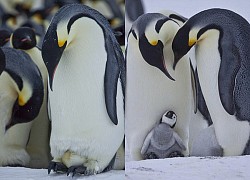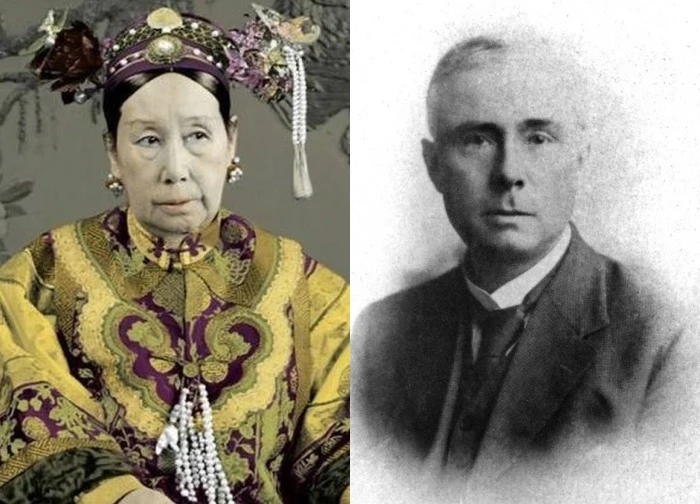The last concubine of Empress Dowager Tu Xi reveals the truth about life in the harem

3 | 0 Discuss | Share
For humans, falling asleep for a few seconds is a sign of lack of sleep and can lead to a dangerous situation. However, in Chinstrap penguins, thanks to a strange adaptation, this way of sleeping is a beneficial feature for them.
According to a study published in Science magazine on November 30, Chinstrap penguins are one of the species with the shortest sleep in nature. Every day they have more than 10,000 short naps, each lasting 4 seconds and a total sleep time of more than 11 hours/day.
According to scientists, penguins live in flocks, each flock containing tens of thousands of individuals, so they must constantly be alert to threats from predatory skua birds and hostile neighboring flocks. for their nest.
"It clearly shows that sleep is constrained by natural selection," said Paul-Antoine Libourel, a researcher at the Lyon Neuroscience Research Center in France.
Animals face a balance between sleeping and staying alert to threats. And these birds have found a way to take advantage of sleeping while still being able to vigilantly guard their nests."
During nesting season, the male squats over the eggs to protect and keep them warm while the female goes on a long hunting trip. Therefore, Chinstrap penguins have developed the characteristic of short sleep to stay alert from natural dangers.
When the "other half" returns from the hunting trip, the couple will switch roles flexibly. In chaotic and noisy environments, any sleep comes at the price of reduced vigilance.
Traditional sleep cycles during this critical period may expose nesting penguins to potential threats. They have therefore adopted a unique sleep strategy, characterized by frequent, albeit short, sleep periods.
"Humans cannot maintain a state of continuous sleep like this, but penguins can. Because sleep is more diverse and complex than what we think about it," said Mr. Paul-Antoine Libourel. know more.
Scientists studied the sleeping patterns of 14 penguins in a colony of 2,700 breeding pairs on King George Island off the coast of Antarctica. After surgically implanting electrodes into the penguins' brains and connecting them to a data recorder placed on their backs, the researchers released them back to the island.
After weeks of observation, scientists have convincing evidence of one of nature's strangest sleep strategies: nesting penguins take 600 naps per hour, each lasting an average of 4 seconds.
They also discovered that sometimes penguins only sleep with one half of their brain hemisphere, while the other hemisphere remains active. And all of these naps combined provide them with restorative brain function throughout the day.
Microsleep has been discovered in many other birds and marine animals such as seagulls, dolphins, ducks and elephant seals, but none persists for as long a period as the chinstrap penguin.
Accordingly, African forest elephants sleep on average 2 hours a day. Or like the sea cormorant that can fly for months during the migration season. They can sleep less than 1 hour a day and still be healthy. When they return to the nest, their daily sleep increases to 13 hours.
Vladyslav V. Vyazovskiy, Professor of Sleep Physiology, and Christian Harding, a sleep researcher, wrote in a related commentary on this finding: "Prove that sleeping this way does not cause harm." Harm to penguins would challenge the current interpretation that sleep fragmentation does not ensure good sleep quality."
Chinstrap penguins, scientific name Pygoscelis antarcticus, are named after the thin black strip of feathers that extends from ear to ear. This is the penguin species with the largest number, they currently have nearly 8 million breeding pairs. This species mainly lives in Antarctica and South Atlantic islands.
They have a body size of up to 68 cm long and weigh up to 6kg. However, their weight can be as low as 3kg depending on the reproductive cycle. Male birds are larger and heavier than female birds. Their food is mollusks and fish. They swim up to 80km out to sea every day.
Two of Antarctica's most common penguin species, Chinstrap and Adelies, are at risk of dying out as a warming climate causes their main food source, shrimp-shaped krill, to decline. quantity. That is the result of research published in the Scientific Proceedings of the US National Academy of Sciences.
Research has been conducted since the mid-1970s, focusing on Chinstrap birds in the South Shetland Islands and Adelie birds in western Antarctica. At that time, the survival rate of juvenile penguins after what scientists call "the transition period to independent life" was 50%. Currently, this rate is only 10%.
"The current number of Chinstrap birds is 2-3 million, but twenty years ago, this number was 7-8 million," said expert Wayne Trivelpiece - head of the research team. The main reason for this sudden decline is the death rate of krill - the main food source for penguins - up to 80% due to the warming climate.
The increase in the "population" of whales (one of the animals that eat krill) and the fact that some large seafood enterprises regularly use krill as food to feed seafood, have also led to a decrease in the number of whales. quantity of this species in nature.
Why are penguins never frozen?  Hồng Hạnh10:19:44 14/08/2021Why is this bird's feathers never frozen? Antarctic penguins live in an extremely harsh environment where temperatures can drop to -40C and wind speeds can reach 140km/h. So why is this bird's feathers never frozen? Penguins, also known as winged penguins, are an order of...
Hồng Hạnh10:19:44 14/08/2021Why is this bird's feathers never frozen? Antarctic penguins live in an extremely harsh environment where temperatures can drop to -40C and wind speeds can reach 140km/h. So why is this bird's feathers never frozen? Penguins, also known as winged penguins, are an order of...

3 | 0 Discuss | Share

4 | 0 Discuss | Share

4 | 0 Discuss | Share

3 | 0 Discuss | Share

0 | 0 Discuss | Share

0 | 0 Discuss | Share

1 | 0 Discuss | Share

4 | 0 Discuss | Share

4 | 0 Discuss | Share

2 | 0 Discuss | Share

2 | 0 Discuss | Share

4 | 0 Discuss | Share




1 | 1 Discuss | Report